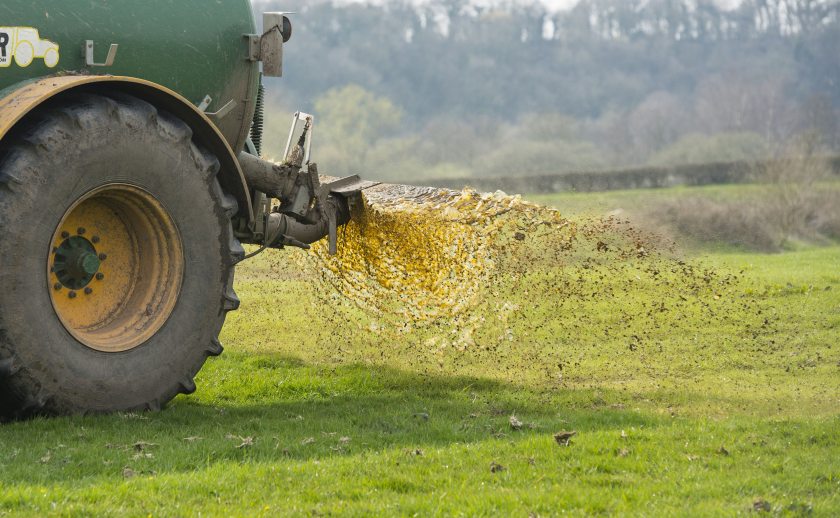
Changes to spreading organic manure are set to have a 'big impact' on farm businesses as the Environment Agency clarifies the requirements of the Farming Rules for Water - Rule 1.
The Environment Agency (EA) has issued new guidance on the spreading of organic materials which is set to affect farmers and land managers in England.
Farmers will be permitted to spread slurry or manure in autumn if there is no pollution risk, as the EA confirms it has relaxed enforcement rules until the end of February 2022.
Its new regulatory position statement (RPS) permits farmers to apply organic manure to land that may exceed the needs of the soil or crop on that land, but must not cause a risk of pollution.
It requires farmers to plan nutrient applications of organic material and manufactured fertiliser to crops, taking into account risks to water from nitrogen (N) and phosphorous (P).
Under Rule 1 of the Farming Rules for Water, which has been subject to intense scrutiny for some time, farmers will, however, have to justify why they need to apply organic manures in the autumn.
The biggest impact is set to be felt in the east of England where most pig and poultry manures are applied ahead of autumn cropping.
Responding to the new rule change, the NFU said it was a 'missed opportunity' to provide clarity for farmers who had significant concerns on how the rules for water regulations were being interpreted.
“I am deeply disappointed with the content of the statement by the Environment Agency, which sets an idealistic and impractical barrier in many farming situations," said Stuart Roberts, the union's deputy president.
“To find ourselves in this situation so close to autumn shows a complete lack of appreciation of the bigger picture; these materials improve soil health and replace man-made fertilisers while use at this time of year reduces ammonia emissions compared to applications in the spring.
"This legislation must be applied in a way that recognises the wider benefits of using organic manures sustainably."
The Country Land and Business Association (CLA) said it was still likely to have 'a big impact' on farming businesses, with 'little time to adapt plans for this year'.
Chief land use policy adviser, Susan Twining said: “Of course, water quality should never be compromised. A healthy water environment is key to ensuring wildlife can flourish, and everyone has their part to play.
“But further thought is urgently needed on how to balance the value of organic material for building soil health and benefits for carbon sequestration, reducing reliance on manufactured fertilisers, improving water holding capacity and associated flood risk."
What do the new rules mean?
The Farming Rules for Water (FRfW) - Rule 1 has requirements for planning nutrient applications of organic material and manufactured fertiliser to crops, taking into account risks to water from nitrogen (N) and phosphorous (P).
The Rules apply across the whole of England. Those in a Nitrate Vulnerable Zone (NVZ) should also follow the NVZ rules that have additional requirements.
There should be proactive management of all crop nutrients on farm to avoid losses to water and also air (as ammonia and nitrous oxide).
Mitigation action must be taken where there is a significant risk to water. This might include reviewing the need for organic material, adjustment of application rates, considering alternative fields, or the export of manures.
Organic materials applied as a means of disposal, rather than as part of a crop nutrient management plan based on crop and soil needs, will be in breach of the Rules.
The decision-making process on whether to apply organic material and/or manufactured fertiliser should be a transparent part of manure and nutrient management planning.
A nutrient management plan should take account of crop need, manure type, its nitrogen (N) and phosphorus (P) content, rate of application, soil type and nutrient indices, and weather forecast at application.
The Reduction and Prevention of Agricultural Diffuse Pollution (England) Regulations were introduced in 2018 - known as the FRfW. These placed key aspects of the Code of Good Practice for water into regulation.
